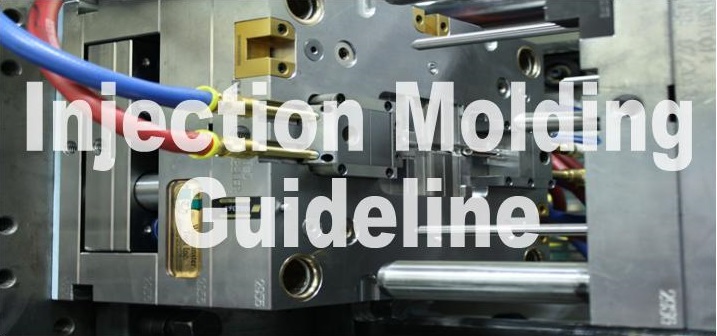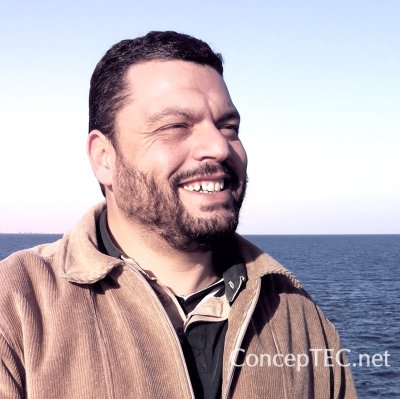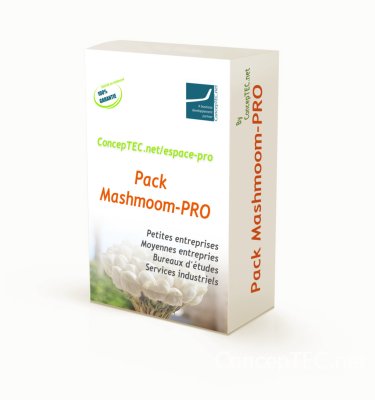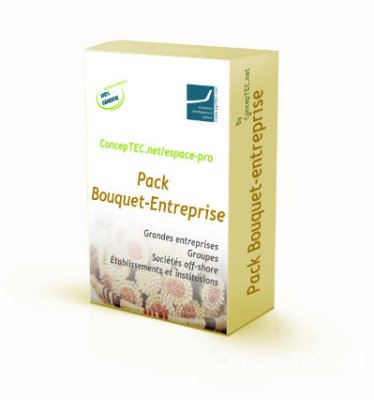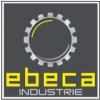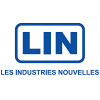1. Plastic Material
Assume the general purpose grade plastic materials to be used for our molding
In case of special grade materials, please list the material grade & brand on our tool plan
All the plastic materials for molding must be same as the materials during development stage.
In case of material shortage or cost issue, the new sourced material shall be tested and confirmed acceptable prior use.
2. Colorant
All the colorant must be conformed to heavy elements directives for both ASTM F963 & EN71.
Most of the dry pigments are hygroscopic; they must be properly sealed after use.
For the components with high color consistence, the masterbatches or pre-color plastic materials are required.
3. Regrind Material Ratio
For plastic material on structural components, no regrind is allowed
For general purpose material on non structural components, 20% maximum runner regrind can be blended with virgin material.
For those translucent or true white color components, no regrind is allowed.
For short glass filled materials, 15% maximum regrind can be blended with virgin material
For long glass filled materials, no regrind is allowed.
The maximum number of regrind passes for general purpose materials shall be 3.
Only 1 time of regrind pass is allowed for short glass reinforced materials
The regrind ratio shall be shown in our updated tool plan to follow.
The regrind ratio and no. of regrind passes has to be validated and confirmed during development stage. If not, no regrind will be allowed.
Burned or discolored sprues or parts must not be used as regrind.
Hot nozzle & hot runner is our preference to eliminate runner scrap.
4. Material Drying
Most plastic resins require thorough drying prior injection molding to assure maximum properties in the molded parts. Below table please find the recommended drying temperature & duration for reference:
For those hygroscopic materials, the dehumidifying hopper dryer with closed-loop air circulating system is required to ensure acceptable moisture content to be achieved during molding.
For those non-hygroscopic materials, the regrind have to be dried as 80oC for 2 hours to prevent surface blemishes due to volatiles, such as PE, PP, POM, HIPS.
Material | Drying Temperature | Time required (Hour) | Dehumidifying Dryer required |
ABS / C-ABS | 80oC | 2 | No |
Nylon 6 / PPO / PC+ABS | 100oC | 2 | No |
Nylon 66 | 120oC | 2 | No |
PU | 110oC | twenty three | Yes |
PC | 120oC | twenty three | No |
PET | 120oC | twenty three | Yes |
Regrind blench for PE / PP / HIPS / POM | 80oC | 2 | No |
5. Screw Design
For most of un-filled plastic, standard screw with L / D ratio 22:1 is recommended
For glass reinforced plastic, screw with lower L / D ratio 20:1 is recommended
Bi-metallic screw and barrel are required for glass reinforced plastic to have higher wear assistance
6. Molding Machine & Accessories Selection
The distance between two columns (Horizontal) shall be 10mm minimum longer than the mold width
For non engineering or unfilled plastic resin, up to 90% rated barrel capacity shall be utilized.
For engineering and all glass filled plastic resin, up to 70% rated barrel capacity shall be utilized.
For clamping tonnage consideration, the multiple of projectile area and fill pressure should be up to 90% of rated clamping tonnage of machine. However, the actual requirement will be depended upon the wall thickness, parts geometry and gate design. Below table please the fill pressure factor for common use plastic for reference.
Plastic Materials | Fill Pressure (Ton/Sq Inch) |
PE / PP / EVA | 1.8 |
HIPS / ABS / C-ABS | 2 |
TPU / PC / PC+ABS | 4 |
Glass Filled Plastic | 5 and Up |
The minimum tonnage for mold size shall be put to Machine Size column on Tool Plan
For high precision parts & optical lens, electric molding machine is preferred.
Automatic parts / sprue removal system should be installed for 220 ton or above molding machines
Hopper loader should be installed for 220 tons or above machines
Proportional type hopper loader should be used for the molding with instant runner scrap recycling.
Hopper magnet shall be equipped for all material hoppers.
7. Mold Clamping
For machine capacity up to130 tons, all molds can be clamped onto machine platens by either clamping slots or mounting holes.
For machine capacity more than130 tons, all molds can only be clamped onto machine platens by clamping slots.
Always use appropriate clamping tonnage for clamping, 10% higher than the theoretical clamping tonnage as section 6d). Excessive clamping pressure will ruin the molds, especially on weak parting line areas.
Jiffy type plugs and connectors are preferred to speed up set-up time.
All Eyebolts must be removed before molding start in order not to interfere any mechanical movement
The Hoist Ring type is preferred to prevent accidents caused by traditional eyebolt failure
8. Mold Cooling
All cooling lines must be connected to water manifold of machines as per indication of mold drawing
The water temperature difference between inlet and outlet shall be less than 5º C.
Correct mold temperature shall be maintained for different materials to obtain good aesthetic and mechanical properties
Appropriate mold temperature should be depended upon the wall thickness, aesthetic requirement and flow length to thickness ratio (L/T). Below table please find recommended mold temperature for most common materials:
Plastic Materials | Mold Temperature |
PE / PP / HIPS | Chill water to 40ºC |
ABS / C-ABS | 20ºC to 50ºC |
POM / Unfilled Nylon / Unfilled PET | 40ºC to 70ºC |
PC+ABS / PC | 50ºC to 80ºC |
Filled Nylon / Filled PET | 60ºC to 100ºC |
9. Molding Process Parameter
Set barrel heaters to ramp profile, lower at the feed throat and higher at front zone. Below table please find the recommended temperature range for reference:
lastic Materials | Cylinder Temperature ºC |
PE / PP | 190 – 220 |
HIPS / GPPS | 180 – 220 |
ABS / C-ABS | 190 – 240 |
Polyacetal | 170 – 210 |
PC | 260 – 300 |
Nylon 66 | 260 - 290 |
Set the injection to lower limit and add gradually to obtain good parts
Set the injection speed to high for crystalline material and medium for amorphous materials.
Set holding pressure and time to zero.
Start making short shots without any cushion, the incrementally increase shot volume until the part is approximately 95% full. This becomes the transfer point (time). Begin weighing parts.
Set the packing pressure 30% to 40% below first stage pressure and continue weighing parts (normally uses only 1 – 3 seconds pack time). Increase shot volume until a cushion is developed. Incrementally increase pack time until part weight does not increase. At this point, gate freeze-off has been reached.
Set the back pressure low but ensure to displace trapped air in the screw feed section and good melt homogeneity. For glass filled plastic, the recommended pack pressure should be 20 – 50 PSI to prevent glass breakage.
Set the cooling time to permit the parts to be ejected without the ejector pins marks or pushing into the parts.
The molding set-up sheet for every mold must be well documented and attached to molding machine for review during molding.
10. Cycle Time
Below table please find our expected quoting cycle time for different parts category and machine size:
Parts Description | Example | Machine Size | Expected Cycle Time (S) |
Small size parts with 1.5mm wall thickness or below | Button or POM components | 70 ton or below | 26 |
Medium size parts with 1.5mm wall thickness or below | Battery Door & 4 up Cartridge mold | 70 to 120 ton | 30 |
Small size Housing with 2.0mm wall thickness or below, or multi cavities components | LTLP Counting House & Fridge DJ Housing | Over 120 to 200 ton | 34 |
Medium size Housing with 2.5mm wall thickness or below | LeapPad & MFLP Housing | Over 200 – 280 ton | 38 |
Medium size Housing with 2.5mm wall thickness or below | Around the Block Housing | Over 280 ton – 350 ton | 42 |
Large Housing with 3.0mm wall thickness or below | Baby DVD Base Housing | Over 350 – 450 ton | 48 |
Extremely large Housing with 3.0mm wall thickness or below | Top & Bottom Housing for Learning Table | 450 – 600 ton | 55 |
The cycle time for all tooling will be finalized after verification by our tooling engineer during FEP stage.
The limited condition that keeps the molds from being run at a lower cycle time has to be specified in quotation and mold drawing approval stage, such as wall thickness, aesthetics, dimensional tolerance or components design.
11. Mold Releasing Agent
During first shot and EP stages, the mold releasing agent can be applied when parts’ sticking occurs.
During FEP and PP stages onwards, no mold releasing agent is allowed.
All mold releasing agent must be non-toxic and CFC - free aerosols
12. Second Operation
The fixture materials shall be made of Phenolic, Aluminum, coated steel or those materials with high resistance to worn-out and corrosiveness.
All the fixtures must be calibrated daily and once molding start.
No breakable knife or tools are allowed for degating and flashing trimming
13. Process Control
The signed shot sample and components’ specification shall be attached to machine for routine quality check by quality inspector or molding supervisor prior molding start.
The molded color, aesthetics and critical dimensions shall be inspected and confirmed acceptable by quality inspector prior molding start.
Bi-hourly process inspection shall be conducted to verify aesthetics and functional requirements
Critical dimensional check has to be performed for every 4 hours or first and last shot for every shift.
The shot sample should be stored in an air-conditioned environment for at least 1 hour before dimensional check.
Final inspection check shall be performed for every shift prior dispatch to further manufacturing process or storage.
Date code label shall be adhered to every outgoing lot for quality tracking.
14. Mold Maintenance
The mold surface and vents shall be routinely cleaned to eliminate the air trapped & worn-out problems, once for every shift molding. For the volatile materials, such as Polyacetal or PVC, the mold surface or vents shall be cleaned for every 4 hours molding.
The molds, which are in continuous molding, should be dismantled for preventive maintenance, proper cleaning and lubricating on ejector pins, slides, and bushings, etc., once for every week.
For those tailor made spare parts & hot runner consumable components, the safety inventory should be maintained to cover 2 times of lead-time for replenishing.
In case the actual number of shot exceeds our committed tool life as per our Tool Standard, LeapFrog will be responsible for expense for normal mold repair, except the carelessness from operator or poor molding practice. Moreover, the quotation must be approved prior mold repair start.
After any mold is repaired as section 14d, the tool life should be increased at least by 20% of committed tool life, 100K shots for injection mold and 60K shots for blow & die casting molds.
Appropriate mold repair machineries & facilities is required for daily repair & maintenance.
The Copper electrodes for all molds shall be identified and properly storage
15. Shutdown Procedures
When any molds becomes necessary to halt molding for a period of time, the barrel temperature shall be lower down or the cylinder should be purged at regular intervals to prevent material degradation, especially for Polyacetal, PVC, flame retardant or temperature sensitive materials.
And, the water shall also be turned off prior to last 30 shots such that the steel warms up to prevent condensation forming on mold inserts.
The completion of molding run, all traces of compound should be thoroughly purged from barrel with HDPE, PP, Acrylic, Polycarbonate, General Purpose Styrene or commercially available purging compounds.
And, the mold shall be thoroughly cleaned and then coated with rust preventive spray or grease.
16. Tool Plan Updating
The actual number of shots for all active items shall be updated on Tool Plan for every 3 months
The actual number of shots for all inactive items shall be updated on Tool Plan for every year
17. Injection Molding Trouble – Shooting
Problem | Cause | Remedy |
Brittleness | Wet Material | - Review drying procedure |
Overheating | - Reduce barrel / nozzle temperature | |
Molded-in-Stresses | - Increase barrel / nozzle temperature | |
Weld Lines | - Increase injection pressure - Increase melt temperature | |
Warped Parts | Part temperature differential | - Check mold cooling system |
Excessive shrinkage | - Increase part packing | |
Orientation on material | - Change gate location | |
Ejection problem | - Increase cooling time - Reduce mold temperature - Increase ejector pin area | |
Flashing | Inadequate Clamp Tonnage | - Use a larger machine |
High Injection Pressure | - Reduce injection pressure | |
Excessive Vent Depth | - Review mold venting | |
Burn Marks | Air Trapped in Cavity | - Improve mold venting |
Barrel or Nozzle Overheating | - Check heater control | |
Shear Heat | - Reduce injection speed | |
Contamination | - Purge barrel - Clean hopper dryer | |
Weak Weld-lines | Insufficient venting | - Improve cavity venting |
Injection speed too low | - Increase injection rate | |
Mold temperature too low | - Increase mold temperature | |
Incorrect gate location | - Relocate gate or add overflow tab | |
Sticking in Mold | Over packing | - Reduce injection pressure - Reduce injection speed |
Mold design | - Check for undercuts - Inspect ejector system - Increase draft in tool | |
Surface Imperfections | Injection speed too slow | - Increase injection speed |
Cold melt | - increase barrel temperature | |
Cold mold | - Increase mold temperature | |
Wet material | - Review drying procedure | |
Sinks or Voids | Holding pressure or time too low | - Increase holding pressure or time |
Insufficient feed | - Increase shot size | |
Gate freezing off or located improperly | - Check gate dimension and location | |
Gate Blush | Cold material | - Add cold slug well in runner - Increase melt temperature |
Melt fracture | - Reduce injection speed - Increase gate size - Add radius to gate | |
Dimensional Inconsistency | Shot to shot variation | - Maintain adequate cushion - Check for worn check ring |
Melt temperature variation | - Check heater bands / controllers | |
Inadequate packing | - Increase hold time - Enlarge gate to prevent premature freeze-off |



